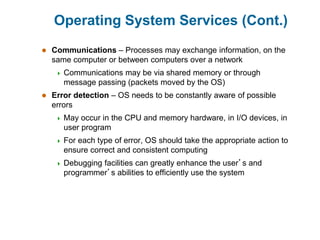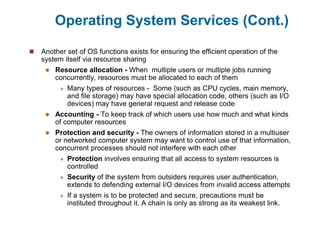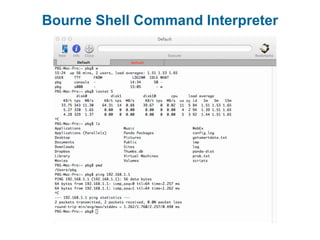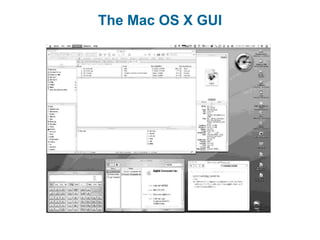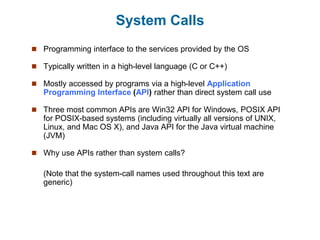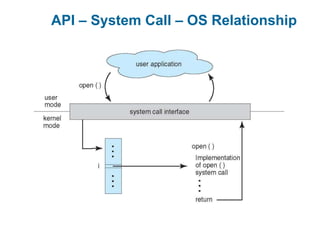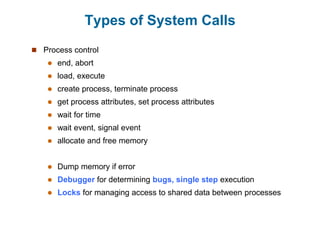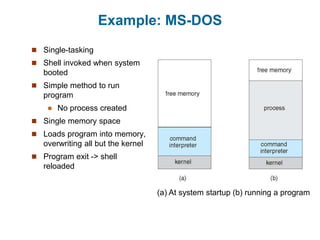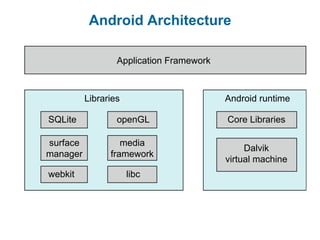This document discusses operating system structures and services. It describes how operating systems provide services to users and processes like user interfaces, program execution, I/O operations, file manipulation, communications, error detection and resource allocation. It also discusses system calls which are the programming interface to OS services, and system programs which provide a convenient environment for tasks like file management, program loading and status information.




